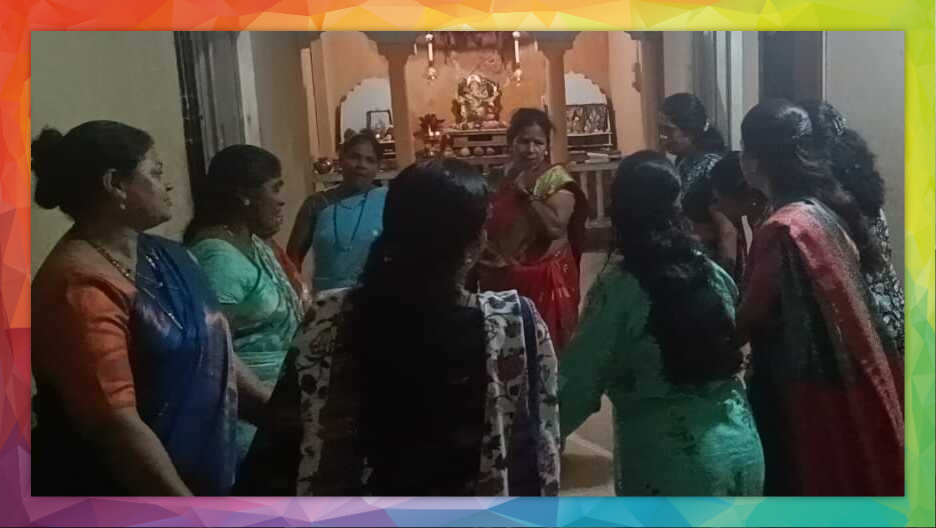Fugdi is a traditional folk dance of Maharashtra, particularly popular in the Konkan region and Goa. This lively and energetic dance is predominantly performed by women, often during festivals and celebrations, reflecting the rich cultural heritage of the region. Fugdi is more than just a dance; it is a cultural expression that binds communities together through music, rhythm, and joy.
Historical and Cultural Significance
Fugdi has deep roots in the rural culture of Maharashtra and Goa, with its origins dating back to ancient times. Traditionally, it was performed by women during the harvest season or religious festivals like Ganesh Chaturthi. It also holds significance during the month of Shravan, a sacred period in the Hindu calendar, when women come together to express their devotion through song and dance.
Apart from religious and seasonal celebrations, Fugdi is also performed during important life events like childbirth and marriage, symbolizing joy and community bonding.
Performance Style
Fugdi is characterized by its circular or serpentine formations, with women dancing either in pairs or large groups. The dancers move in a rhythmic manner, often creating patterns that mirror the unity and cooperation within the group. The performance involves a series of quick movements, with participants clapping, swaying, and twirling to the beats of traditional instruments or even without musical accompaniment.
The most common form of Fugdi is the circle fugdi, where women form a circle and dance to the accompaniment of folk songs. In contrast, row fugdi is performed in straight lines. The dance is known for its simplicity, as it does not involve elaborate costumes or props, allowing the focus to remain on the energy and rhythm of the performance.
Music and Songs
Fugdi performances are usually accompanied by traditional songs sung by the dancers themselves. These songs are often improvisational and cover a wide range of themes, from mythological tales and folklore to day-to-day life experiences. The rhythmic clapping of the hands, stamping of feet, and the repetition of the word “Fugdi” create a pulsating beat that adds to the vibrancy of the dance.
In some regions, instruments like the dholki (a type of drum) or lezim (a small musical instrument with jingling cymbals) may be used to enhance the rhythm, but the dance is mainly driven by the vocal energy and synchronization of the participants.
Variations Across Regions
Different regions of Maharashtra and Goa have their unique variations of Fugdi. In Goa, the Gadval Fugdi is a popular form where women perform the dance while balancing brass pitchers on their heads, showcasing their agility and grace. In some communities, Fugdi is performed inside temples as part of religious rituals, while in others, it is a more informal dance meant for social gatherings.
Costumes and Attire
Although Fugdi does not have elaborate costumes, participants usually wear traditional attire. Women often dress in nauvari sarees (a traditional Maharashtrian nine-yard saree), which allow for free movement. The simplicity of the dress complements the dance’s spontaneous and folk nature, emphasizing the traditional and communal aspects of the performance.
Contemporary Relevance
While Fugdi remains a popular folk tradition in rural Maharashtra and Goa, its influence has extended beyond these regions. Today, Fugdi is performed in urban areas, cultural festivals, and school events, ensuring that this age-old tradition continues to thrive. Various cultural organizations and folklore groups also work towards preserving and promoting Fugdi, especially as the dance offers insight into the daily lives and traditions of the local communities.
In recent years, efforts have been made to document and popularize Fugdi through media and cultural showcases, ensuring that younger generations understand and appreciate its significance.
Conclusion
Fugdi is more than just a dance; it is a celebration of life, community, and tradition. Its simple yet energetic movements, combined with the rhythmic songs and clapping, make it a joyous and engaging art form. As a key part of Maharashtra’s and Goa’s cultural heritage, Fugdi continues to be a symbol of unity and festive spirit, connecting people across generations and regions.
“A live Fugdi performance captured at the Satam residence in Janavali Gaonthawadi.”



